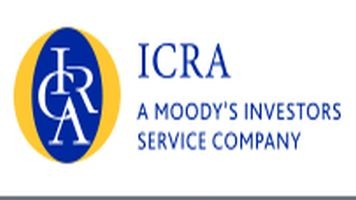
Housing finance companies (HFCs) have been facing tight liquidity conditions since September 2018 and this has pushed them to lower their disbursements and meet a sizable portion of their fund requirement through portfolio sell-down route. According to ICRA note, both of these have impacted the portfolio growth for most of the HFCs – their housing loan portfolio growth for HFCs and non-banking finance companies (NBFCs) reduced to 13% Y-o-Y for the period ended December 31, 2018 (18% for the same period last year). And the total housing credit outstanding increased by 16% (18% for the same period last year) and stood at a little over Rs. 18 lakh crore as on December 31, 2018. Consequently, banks have availed of this opportunity in the market and increased their portfolio 17% Y-o-Y in the same period (14% for the same period last year).
Says Ms. Supreeta Nijjar, Vice President, Financial Sector Ratings ICRA, “As disbursements in Q4 FY2019 are also expected to be muted for some large HFCs, FY2019 housing credit growth is likely to be in the range of 13-15% with the pace of growth of banks being higher than that of the HFCs. As some HFCs aim to go slow on construction finance to conserve liquidity, the growth in non-housing loans is expected to slacken. However, given the positive long-term prospects for the sector, ICRA expects housing credit growth for FY2020 to be pegged at 14-16%, provided the liquidity conditions in the market ease out.”
The liquidity profile for HFCs in the short-term buckets improved in Q3 FY2019 with gaps in up to one-year bucket reducing from around 6% of assets as on September 30, 2018 to around 3% as on December 31, 2018. Thanks to long-term fund mobilisation and securitisation, the share of commercial paper borrowings reduced from 10% as on September 30, 2018 to 3% as on December 31, 2018. Further, most HFCs have started strengthening their liquidity buffers to meet any sudden market disruptions and near-term debt obligations.
The proposed NHBs amendments in capital adequacy, deposit mobilisation and leverage norms for the HFCs are positives from a risk perspective. Most of the HFCs nearing 15-16% CRAR would have adequate cushion to raise Tier II capital and shore up the CRAR, if required, also, their capital adequacy is supported by the lower risk weights on smaller ticket size home loans. NHB has also proposed to bring down the maximum permissible leverage for these companies from 16 times to 12 times by March 2022. As per ICRA's estimates, six HFCs had gearing levels of between 10-12 times as on December 31, 2018, however, well rated HFCs are expected to maintain a cushion over and above the regulatory limits and thus the need to raise external capital could remain high for some entities if the growth momentum was to continue.
While asset quality indicators have remained stable so far, with Gross NPA% of 1.4% as on December 31, 2018, there could be some pressure on the asset quality as the operating environment remains challenging. “Some of the emerging risk factors which need to be watched out for are home loans extended to borrowers where the underlying projects have been significantly delayed and under-construction properties sold by builders under subvention schemes or buyback/assured return schemes. ICRA’s discussion with some HFCs reveals that their stock of repossessed assets has also increased, as saleability of the assets repossessed has reduced, leading to an elongated recovery time. In our opinion, the gross NPAs in the HFC home loan segment are likely to increase to around 1.1-1.3% over the medium term from the current level of 1.0%.
Further, the tight liquidity faced by some developers where projects are delayed could lead to some stress on the
construction finance portfolio of the HFCs, leading to increase in overall gross NPAs for the HFCs to around 1.4-1.8% over the medium term,” said Ms Nijjar. Profitability indicators for FY2019 are likely to moderate to 14-15% (vis-a-vis 18% in FY2018) with some moderation in net interest margins, though upfront income booking on assignments could provide some support. As for FY2020, ICRA expects the HFCs to report similar profitability indicators as FY2019 unless a prolonged slowdown in growth impact the operating expense ratios and asset quality of some asset classes, which could lead to further dip in profitability indicators.


